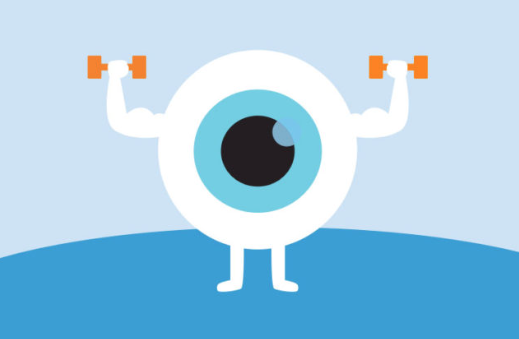Throughout the summer, many of us have been active traveling and will continue doing so through labor day. This could involve long car rides, flights, and disturbances in our usual movement and self-care routines. Some people specifically avoid traveling due to back pain or similar issues, or perhaps suffer through increased pain which detracts from the joys of vacationing.
Here are some tips to keep you and your body feeling happy and healthy throughout your travels!
Breaks from prolonged sitting
The number one most important thing is taking frequent breaks from sitting, no matter the mode of travel. Prolonged stillness, especially constricted in an enclosed space of a vehicle or plane, is the recipe for soreness and stiffness.
Rather than only taking breaks for the biological need of needing to use the bathroom, consider the biological needs of your musculoskeletal system. The body’s tissues do not like to be in the same position for too long, especially positions that involve increased pressures on certain areas (e.g. the low back).
In fact, studies have shown that prolonged sitting is associated with increased pressures on the intervertebral discs of the lower back. This study demonstrated that disc height, particularly between the L4 and L5 vertebrae, is significantly impacted by prolonged sitting without breaks. The loss of disc height was not present with brief positional changes performed every 15 minutes. Changes in disc height during prolonged sitting may be associated with low back pain, sciatica, and functional disability.
At the least, try to stand up and walk around once an hour. Consider setting timers so you remember to stop and move around. If you can do it every half an hour, great! If it is not possible to take a break this often, never go for more than two hours without getting up. If you’re not able to get up, change your position often! Trust your own experience and honor your body’s request for appropriate breaks.
Targeted movement breaks
Maximize your breaks from sitting with specific movements/stretches that help to reverse the effects of sitting.
Notice that in sitting, the hips and knees are flexed to around 90 degrees. Most people also tend to sit with some flexion in the low and mid back. This shortens certain muscles/tissues, particularly around the spine, hips, and knees. By specifically performing movements that lengthen those tissues, you can help prevent your body from getting quite as stiff and sore during long trips.
Consider trying some movement snacks (see our Movement Snacks blog) to break up your car trip, particularly the first three videos that you can do standing up (perhaps using your car or a picnic table for support).
Another favorite is a standing back extension, which involves pressing the hips forward to extend the back and hips. This movement can be done as shown below, or by pressing the hips forward into a support surface such as your car, a chair, or a picnic table, while gently holding on to the support surface.
I also love to do a version of a sun salutation that you can do while standing. This involves reaching up to the sky, down to the ground, and cycling through this while breathing.
You could also do standing pelvic circles, imagining you are standing with a small hula hoop around your waist, and you make circles with your hips within the hoop.
It may also be helpful to consider how the spine moves in space, and engage in movements in which you move the spine in each of the three directions (flexion/extension, side bending, and rotation). See our How the Spine Moves blog for more information.
At the Wellness Station, we will help you create specific, individualized movement routines that you can integrate into your travels.
Ergonomics and posture
While sitting for a while during travel, it can be helpful to enhance your ergonomics and posture. See our Posture Part II blog for more specific information.
The main factors to consider here are:
Appropriate back support
Consider having an inflatable travel ball to stick behind your back in the car or on the plane to help support your spine.
The above can be ordered from Amazon and deflated to the level that fits best for your body size and your seat.
Changing Position Often
Try not to get stuck in one stagnant sitting position. Cycle between being more reclined and less reclined. Change where you are holding your legs. Move the ball around to some different positions.
Sitting movement breaks
Similar to changing position often, try to incorporate specific movement breaks while sitting. You can be doing the pelvic clock. You can be gently pumping your ankles, stretching your hips, rolling your neck. Some planes even have specific in-flight videos for sitting stretches you can follow along to.
Establishing a vacation movement routine
Many people let their routines slip away on vacation. “I’m on vacation- why would I be exercising?” While of course you want to have plenty of time to immerse yourself in new experiences, or perhaps sit on the beach with an ice cold margarita, vacations are no time to be sedentary. Don’t you want to be feeling your very best to fully enjoy your vacation, rather than feeling stiff, achey, and out of shape?
How can you re-establish a movement routine while traveling? Bringing a yoga mat and some very minimal supplies (ankle weights, therabands) might be an option while traveling. If not, perhaps there is a hotel gym and/or pool that you could enjoy. When bringing equipment and gym access is not possible, think of what body weight movements you could do (e.g. variations of squats, lunges, push ups, cat cow, step ups, etc.)
Consider opting for an active vacation. How can you explore new places with your own two legs? Is there a hike in the area you would like to explore? A bike trail? Swimming in a pristine lake or a salty sea? Or perhaps a walking tour of the downtown must-sees.
Whatever your journey may be, try to prioritize staying active so you can make the very most of your vacation. At the Wellness Station, we can help to gradually progress your fitness to help you be able to move towards the trip of your dreams.
A biking exploration of Jasper National Park
Written by Jacob Tyson, DPT - Physical Therapist, Yoga Instructor and The Wellness Station Team




























